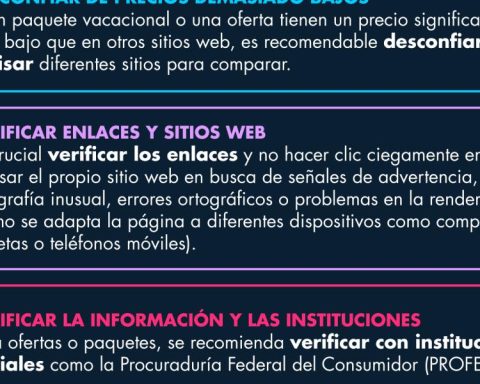One of the moments that generates the most doubts when filling out the Personal Income Tax return is the declaration of assets such as a car and real estate. Although the procedure is similar, there are differences when it comes to informing the sale of goods.
In relation to real estate, the taxpayer needs to be aware of gains with the appreciation between the purchase and sale of the good. The buyer will be exempt from Income Tax (IR) on the capital gain in the following situations: if he buys another residential property up to six months after the sale or uses the sale money to pay off – partially or totally – real estate financing contracted previously.
THE exemption from income tax in the discharge of financing is a novelty in this year’s statement. By authorizing the mechanism, the IRS formalized court decisions that recognized the right not to pay tax.
Fill
First, the taxpayer who acquired a property last year must open an item in the Assets and Rights form, where he will inform the code corresponding to each type of property. Each type of property has its code in group 1, according to the new asset code list which came into force this year.
In the Status on 12/31/2020 field, the taxpayer will enter zero value, if he bought the property last year, or the purchase value, if he bought it in other years. In the Status on 12/31/2021 field, simply repeat the purchase amount.
In the Discrimination field, the taxpayer must detail information about the seller of the property, such as name, CPF, National Registry of Legal Entities (CNPJ) and inform whether the purchase was in cash or financed. It is also necessary to inform the date of purchase, registration number and notary, area and municipal registration numbers (for urban property) or the property number at the Federal Revenue Service (for rural property).
Real estate financing must be informed only in the Assets and rights form, similarly to vehicle financing. With each declaration, the buyer will inform the sum of the amounts paid in the previous year, until the installments are completed. Thereafter, the total amount paid, which includes financing costs, must be repeated every year, as long as the taxpayer is the owner.
In the case of vehicles, the procedure is similar. The taxpayer must only inform the value of the purchase and repeat it every year. Financed vehicles must be declared in the same way as real estate, with the taxpayer declaring the value of the entry in the first year and adding the value of the benefits accumulated in 12 months in the following years.
The codes to inform the type of vehicle are in group 2, which includes movable property. All land vehicles (car, motorcycle and truck) are in code 1 of this group.
In the Discrimination field, the taxpayer must inform the vehicle data (model, year of manufacture and license plate), seller information (name, CPF or CNPJ, if the purchase was made in the previous year) and the payment method. Those who purchased a used vehicle can find this information on the copy of the transfer document. Also in this case, the declared value must be the value of the acquisition of the good, not the market value.
Not everyone must declare the Income Tax, only those who fit the criteria of the Federal Revenue. However, the taxpayer obliged to make the declaration must inform the vehicle, regardless of the value.
debts
In the case of real estate financing, the Debts and Real Onus form should be ignored, both in the case of real estate and vehicles. It is intended only for debts without any asset as collateral, such as bank loans or loans between individuals. As the property or car can be taken back by the bank in the event of default, this operation does not fit into this form.
Sale
The difference in the declaration between real estate and vehicles is in the sale. As cars and other vehicles depreciate over time, the taxpayer will not have capital gains. It is sufficient to enter the value zero in the Status field on 12/31/2021 and specify who sold the asset to, informing the CPF, in the case of an individual buyer, and CNPJ, if the car was sold to a dealership and reseller.
In relation to real estate, the taxpayer must complete one more step. In addition to the Assets and Rights form, which will list the properties, the taxpayer who sold needs to access the Federal Revenue’s Capital Gains Calculation Program. On the platform, the seller will need to inform the form of payment and the cost of the property, in addition to detailing the technical information of the property and data about the buyer. Based on the data, the tax authorities will cross-check the information to detect any errors or inconsistencies.
The sale must be detailed in the Discrimination field, including the buyer’s name and Individual Taxpayer Identification Number (CPF), the value and date of the transaction.
Anyone who sells real estate needs to determine whether there was a capital gain (income obtained from the appreciation of an asset) with the operation. If you have profited from the sale, the taxpayer will be taxed according to a progressive table, which is levied on the profit, not on the total value of the property.
If the real estate profit reaches R$ 5 million, it will pay 15% tax. The rate rises to 17.5% on profits from R$5 million to R$10 million, to 20% on profits from R$10 million to R$30 million and to 22.5% on profits over R$30 million . As the capital gain rarely exceeds BRL 5 million, almost all of the declarants pay 15%.
Capital gain
The calculation of the capital gain on the property must be carried out in the month following the sale, through the Capital Gains Calculation Program 2021 (GCAP2021), available at IRS page on the Internet. The Income Tax must be collected until the last business day of the month following the deal, by means of a Federal Revenue Collection Document (Darf) issued by GCAP.
When filling out the Income Tax return, the taxpayer must import the GCAP2021 data into the program that generates the Federal Revenue Declaration. The system itself will automatically fill in the data and classify a part of the capital gain as exempt income and another part as income subject to exclusive taxation.
In addition to using the money from the sale to buy or pay off another property, there is an exemption for the sale of old properties. Units purchased up to 1969 do not pay income tax when they are sold. Properties purchased between 1969 and 1988 are partially exempt. An additional exemption situation is the sale of the single property, provided that the value of the transaction does not exceed R$ 440 thousand.

















